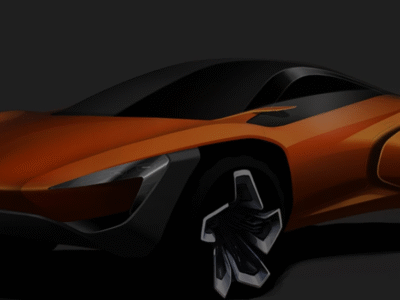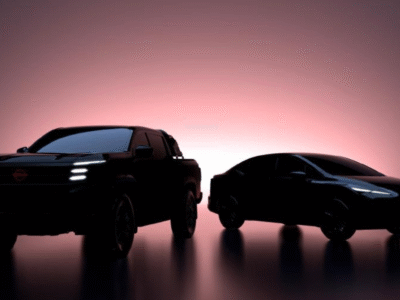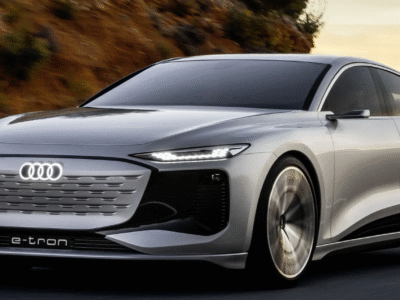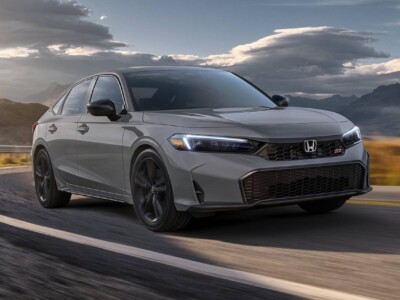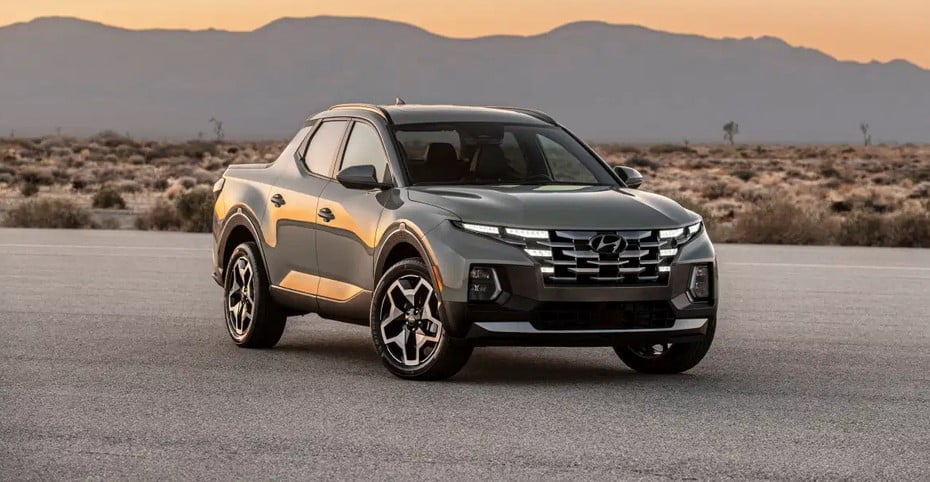
When the Hyundai HCD-15 Santa Cruz made its debut at the Detroit Auto Show in 2015 as a concept, it was met with enthusiasm. Now that the production version, the 2022 Santa Cruz truck, is here, it’s interesting to take a retrospective look to see how it differs from the concept.
The HCD-15 featured a somewhat generic front styling that didn’t draw from any existing Hyundai production model. At the time of the concept’s debut, project lead John Krsteski, manager of Hyundai Design America, mentioned that a production version “could be based on something like a Tucson.” And that’s exactly what happened. The 2022 Santa Cruz borrows the front clip from the new Tucson, with its sleek combination of LED lighting elements and grille design. From this perspective, we can also note an evolution in the vehicle’s proportions, with the lowered roofline and wider appearance giving way to the higher greenhouse of the production model, featuring a windshield that again seems shared with the Tucson.
The most significant evolution in the Santa Cruz concept can be seen in the side view. The HCD-15 adhered to the extended cab truck norm with its configuration of long front doors paired with mid-sized rear doors with rear-hinged hinges. However, as that configuration has fallen out of favor in preference for four-door crew-cab pickup trucks, Hyundai wisely changed the Santa Cruz to regular four doors. This gives it a less sporty appearance, perhaps, but much more practical and likely better market acceptance.
The production Santa Cruz also adopts the front fender treatment from the new Tucson, again as part of the effort to keep costs in check by using shared components. Nevertheless, it retains much of the concept: the C-pillar treatment, the rearward sweep of the window line, the lower body styling, the location of the axles within the body, and the round, smooth fender flares.
In the rear, the styling of the production Santa Cruz (left) has taken a turn toward the aesthetics of conventional trucks, with a less rounded lower tailgate and a separate, square bumper. Instead of the integrated exhaust outlets of the concept, we have thick steps integrated into the ends of the bumper.
While the central Hyundai logo disappeared, the brand name is stamped on the tailgate handle. However, the treatment of the tailgate surface is similar, as is the design of the taillights.
Although Hyundai did not provide dimensions for the concept’s cargo bed, it seems no larger than that of the production truck, which measures just over 4 feet long. For an extra dose of utility, the concept floated the idea of a drawer-shaped bed extension. Although the Santa Cruz production settles for a conventional fold-down tailgate, it can also be partially opened to be at the same height as the wheel housings within the bed.
The tailgate of the 2022 Santa Cruz also follows the truck convention with its stamped nameplate: SANTA CRUZ. The letters have a robust design that seems fitting, but we prefer the more unusual letters used in the concept, engraved on the front spoiler. Were they considered too quirky for production?
Overall, although the Santa Cruz concept from six years ago has undergone significant modifications on its journey from the show car to the showroom, the changes made did not fundamentally alter the vehicle’s appearance. Hyundai designers deserve praise for maintaining the spirit of the captivating concept while bringing this product to an equally captivating reality.


